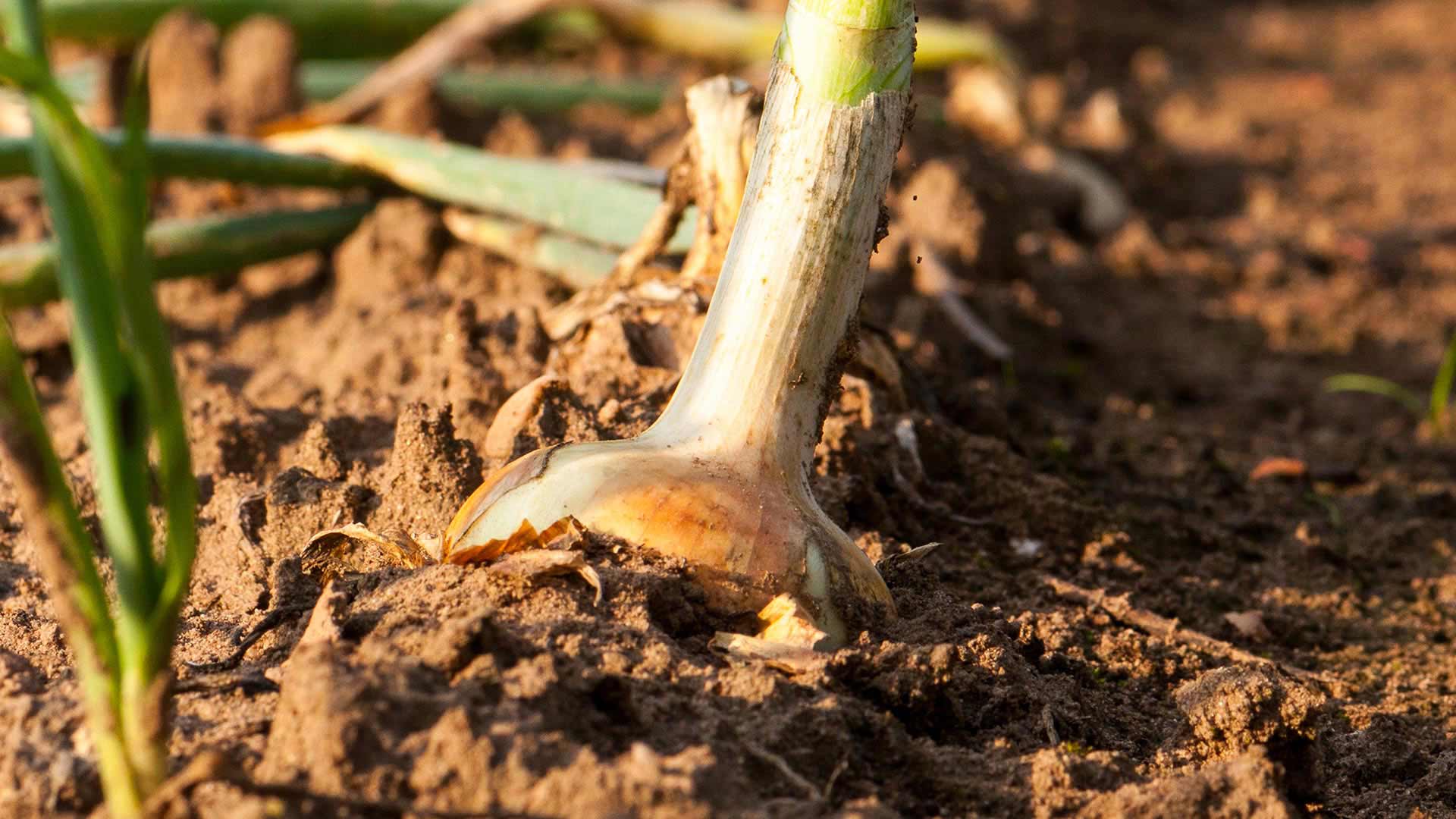Selecting Onion Varieties for California Gardens: The Importance of Day Length

Selecting bulb onions varieties to grow in the home garden is more complicated than for most other vegetables. The most important factor for home gardeners is day length, meaning the number of hours of sunlight needed to initiate bulbing and for the plants to form full, mature bulbs. If you have the wrong day-length variety for your time of year and area, onions will form small bulbs or may fail to form bulbs at all. Bulb-onion varieties come in short-day, intermediate-day, long-day, and day-neutral varieties.
To determine your daylight hours, search on the internet for “sunrise sunset calendar” to find sites that will allow you to calculate day length by city. Search sunrise and sunset times for June 21 and December 21, on or near the summer and winter solstices, which are the longest and shortest days of the year, to understand the range of day lengths in your area. The critical day-length time for bulbing is when onion plants have grown large enough to be leaving the seedling stage and beginning to bulb, often about 8 to 10 weeks after germination. GardenZeus recommends deducting an hour per day when calculating day length, to account for twilight times after sunrise and before sunset, with your total day length on a given day (for purposes of growing bulb onions) being the length of time from official sunrise to sunset, less one hour.
– Short-day onion varieties bulb well with 10 to 12 hours of daylight, and are best suited to being grown from fall through early spring in Southern California. Short-day onion varieties are recommended for all areas of California with sufficiently mild winter weather to grow onions outdoors from fall through spring. Examples of short-day onion varieties include Texas Supersweet and Red Creole.
– Intermediate-day varieties need 12 to 14 hours of daylight, and are suited for growing from spring through fall in the most of California where summers are mild and cool.Examples of intermediate-day varieties include Pacific Pearl and Red Candy Apple.
– Long-day varieties need 14 to 16 hours of daylight, and may bulb variably to reasonably well from spring to fall in the northernmost areas of California with cool summer temperatures, but otherwise are not suited to growing to mature, full bulbs in California. Examples of long-day varieties include Walla Walla and Ringmaster.
– Day-neutral varieties are advertised as bulbing well anywhere, but they do best with 12 to 14 hours of daylight, and may be hit-and-miss from fall to spring in Southern California. Examples of day-neutral varieties include Alisa Craig Exhibition and Super Star.
Gardening catalogs and websites contain day length information in their descriptions of the onions they sell. To view the GardenZeus recommendations for onions for your area and to receive comprehensive, customized instructions for growing onions in your area, go to GardenZeus and enter your zip code.